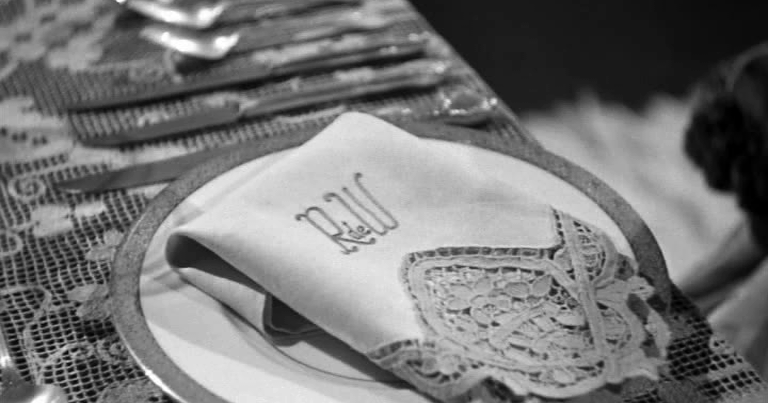You have just read a blog post written by Jason McIntosh.
If you wish, you can visit the rest of the blog, or subscribe to it via RSS. You can also find Jason on Twitter, or send him an email.
Thank you kindly for your time and attention today.

I requested this movie from the library some months ago after it came up in conversation with my wife, a long-time fan of both the original 1938 novel by Daphne du Maurier and this Hitchcock-directed adaptation from 1940. (After my rediscovery of Watership Down, this continues my project of watching the original adaptation of some great work as a result of Netflix announcing their own impending do-over.)
This movie is fantastic, both “for a film of its age” and in general, and you really should watch it. I want you to watch it without knowing very much about it, just like I did. But because this is my blog and I can’t help myself, I shall share a non-spoilery summary of the movie’s hook and then a couple of Top Tips for better viewing before proceeding to unbounded sputtering.
After an intriguing opening narration by Joan Fontaine while the camera flies through a model of a ruined and overgrown English estate, Rebecca presents itself as a romantic comedy where Fontaine’s beautiful young protagonist and Laurence Olivier’s eccentric aristocrat, both lonely and desperate for different reasons, meet in Monte Carlo and immediately entangle. Their desire for each other burns so bright on a bed of adorably snappy dialogue that, when their time together must end abruptly, they willfully leap into a deliriously ill-advised marriage.
And so Mr. de Winter carries his new bride back to England and over the threshold into an entirely different movie. She knew she would have to make adjustments into a new life as the lady of a country estate, but she arrives utterly unprepared to recast herself from a sunny and sexy Riviera comedy into a haunted and shadow-strewn gothic drama. And here her troubles begin, and I could only watch slackjawed for the next two hours as the perplexed but resolute woman navigates a story of masked balls and lunatics and muuurrrder, never quite shedding her status of a complete category error while questing for the exit. This genre-injection brought to mind Edward Scissorhands, except inverted, and I found it simply delectable.
And here I present my strategy guide for watching this movie:
Joan Fontaine’s young protagonist is not named “Rebecca”.
Laurence Olivier’s character is named “Maxim”. (And not, like, “Reginald” or something. Look, this confused me, okay.)
While Olivier positively eats up his role, his casting still seems a bit odd. Maxim de Winter has a full decade on the thirtyish actor portraying him, making him twice his new wife’s age — a scandalous but entirely non-obvious detail. (Olivier spends the whole movie with what I take to be gray stage-coloring slathered in his hair. It doesn’t really work.)
My viewing-partner, quite familiar with the film, provided immediate answers to my voiced confusions on the above topics, and I know that I enjoyed the movie more for it. She consoled me by noting how the du Maurier’s novel had been a bestselling sensation just a couple of years before the film debuted, so audiences probably knew its gists and gimmicks going in.
And on that note, I shall free myself to gush openly about Rebecca’s greatest trick: no actor at all plays the title character, and yet she appears in every frame. She is there by Maxim’s side as he stands on the cliff at the beginning, coaxing him to look over at the jagged rocks; the breakers below provide her violent, hissing voice when Fontaine’s character unexpectedly intervenes. Subdued, she retreats to Manderley, literally stamped everywhere with her monogrammed presence. The lurking Mrs. Danvers considers herself Rebecca’s living avatar, yes, but Rebecca de Winter makes her continuing influence known separately and subtly, right up until the final frame where she burns in wrathful defiance of the THE END card.
The climax of the film, I would argue, arrives with our second visit to the little house by the beach. “The second Mrs. de Winter” — the only name that either Rebecca or Rebecca allow us to know her by — finds and confronts Maxim as his increasing caginess reaches its peak. As he spills his guts, at last, about the fate of his first wife, she reveals herself. The camera tracks her — invisible, sure, but present — as she willingly, and I imagine with a savage glee, retraces her own last living steps just as her widowed husband describes them. Like the dénouement of Fight Club, we retroactively realize Rebecca’s influence throughout every prior scene, but the film doesn’t need to flip through them in flashback; it hits the viewer all at once. And there she remains for the rest of the picture, unchanged and undaunted in her mission to harry and ruin Maxim.
One is tempted to see the end of the movie, with Rebecca’s worldly effects going up in flame, as her final defeat, outlasted by the brave and persistent Second Mrs. de Winter. But then we put the disc away and see the cover once more, and it reminds us which woman got the whole story named after them, and which woman’s name didn’t even survive the story’s telling.
Next post: I read The Death of Expertise
Previous post: I leaven my client-update calls with tiny little slideshows
To share a response that links to this page from somewhere else on the web, paste its URL here.